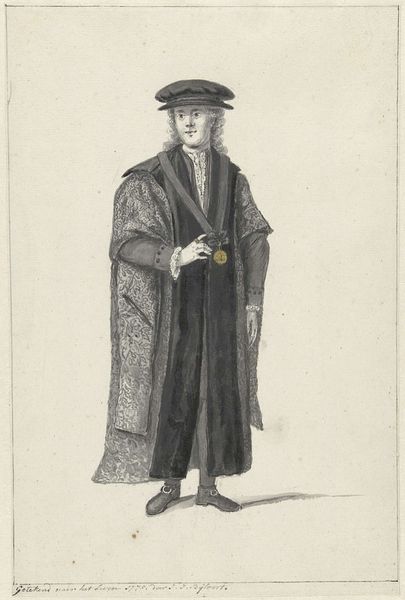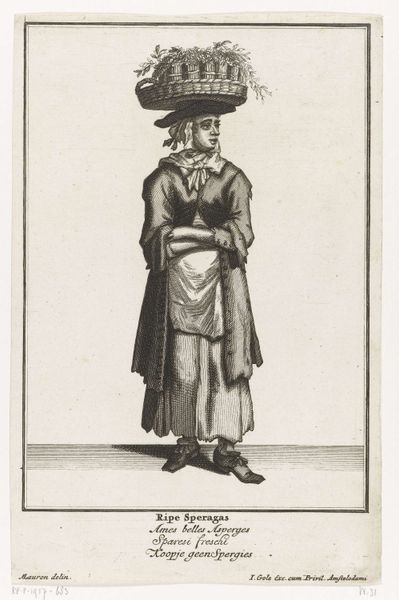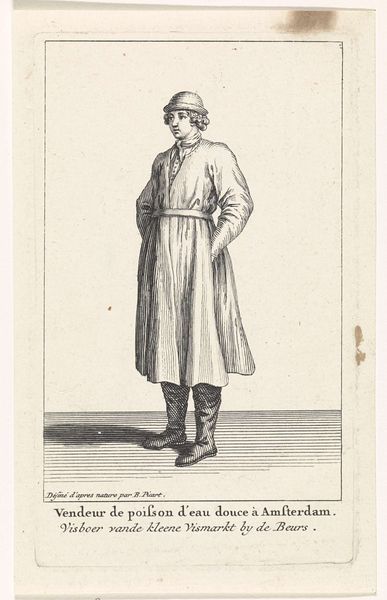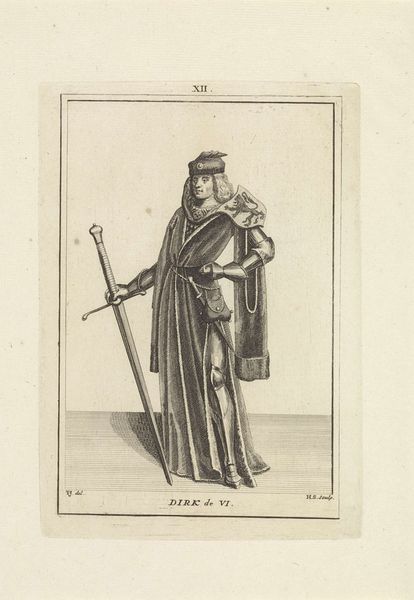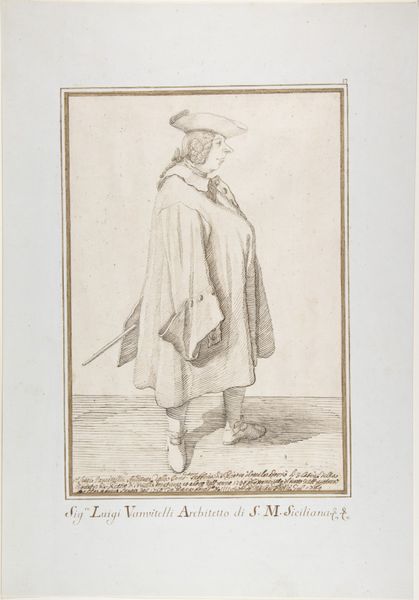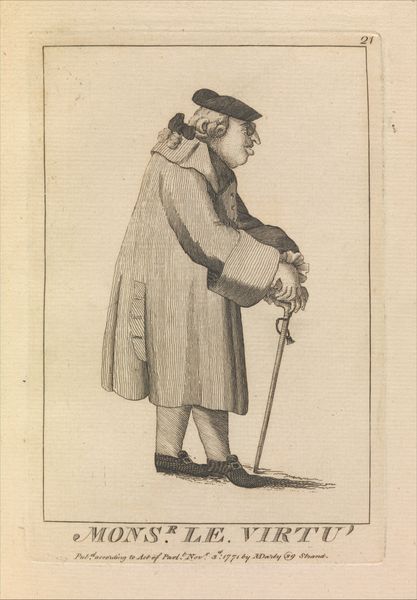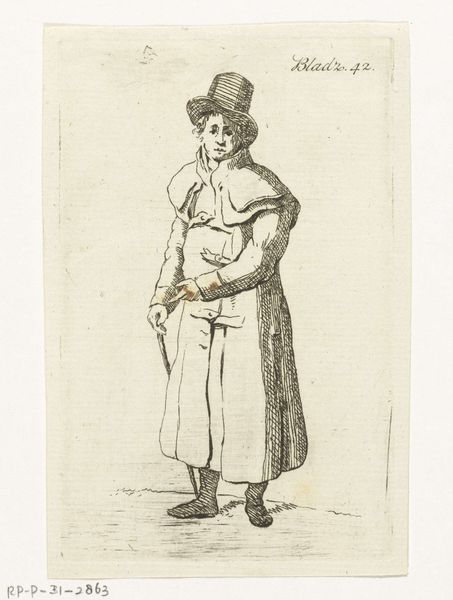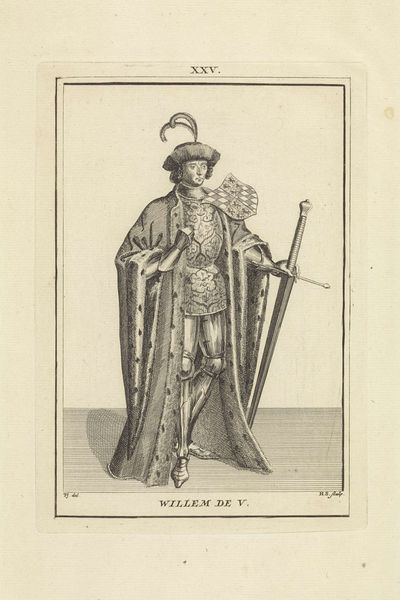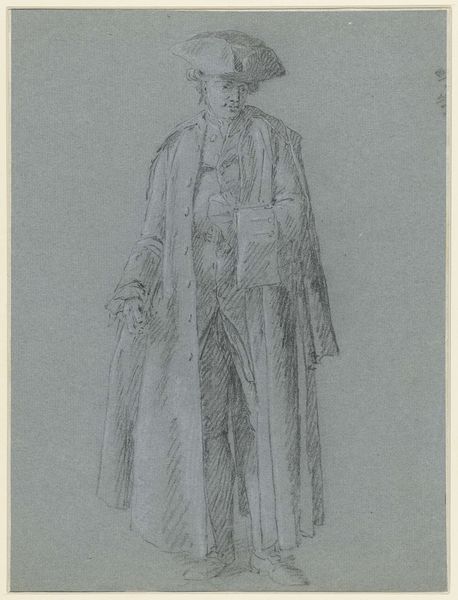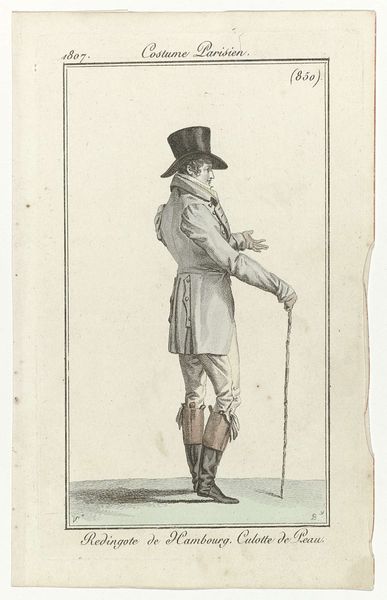
print, engraving
#
portrait
#
neoclacissism
# print
#
genre-painting
#
engraving
Dimensions: height 177 mm, width 112 mm
Copyright: Rijks Museum: Open Domain
This fashion plate, created by Pierre Charles Baquoy around 1811, depicts a man of the Parisian elite in the latest attire. Note the man’s cane, an object that has long been a symbol of authority. Across time and cultures, the staff or cane has appeared in various forms. Think of the scepters of ancient rulers, or the bishop's crosier, each adapted to signify power and guidance. The cane has morphed through ages, from a practical support to a ceremonial emblem. This man's casual yet firm grip on his walking stick echoes something primal, perhaps a subconscious assertion of control and status amidst the shifting sands of post-revolutionary French society. The act of walking with a cane is also a ritual, a dance between balance and posture. This dance is not just physical but psychological, each step a measured statement of self-assuredness.
Comments
rijksmuseum about 2 years ago
⋮
The Journal des Dames et des Modes occasionally provided coverage of men’s styles. These illustrations give a good picture of trends in mens’ clothing from 1797 to 1825. During the 18th century, gentlemen wore culotte (knee-breeches) 1. These fell out of fashion with the elimination of strict class distinctions during the French Revolution, to be replaced by a type of long trouser(s) known as pantalon à la Hussarde 2. These were worn with hussar boots. ‘Pantaloons’ 3 were trousers pulled tight with an elastic strap under the instep. Carrick 4 coats with a double collar were popular, and in the evenings men wore a special dress cloak 5.
Join the conversation
Join millions of artists and users on Artera today and experience the ultimate creative platform.
